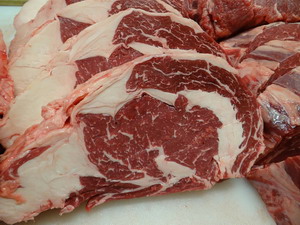 Saturated fat has been a boogeyman since the late 50s, ever since Ancil Keys decided to blame heart disease and atherosclerosis on saturated fats in his famous 7 countries study. The American medical system and the FDA jumped on his hypothesis and started a massive PR campaign to get people to stop eating saturated fat. The problem was his study was a complete lie. In his original analysis looking at dietary patterns and heart disease, there were 22 countries. He cherry-picked the seven countries that appeared to show him right. But when you look at the total data set of all the countries, there was zero evidence that saturated fat had anything to do with heart disease. It has been 70 years since the big lie and still to this day our government tries to convince us that eating saturated fat is bad for us.
Saturated fat has been a boogeyman since the late 50s, ever since Ancil Keys decided to blame heart disease and atherosclerosis on saturated fats in his famous 7 countries study. The American medical system and the FDA jumped on his hypothesis and started a massive PR campaign to get people to stop eating saturated fat. The problem was his study was a complete lie. In his original analysis looking at dietary patterns and heart disease, there were 22 countries. He cherry-picked the seven countries that appeared to show him right. But when you look at the total data set of all the countries, there was zero evidence that saturated fat had anything to do with heart disease. It has been 70 years since the big lie and still to this day our government tries to convince us that eating saturated fat is bad for us.
 Let’s get one thing off the table right off the bat. Eating too much of anything is bad for us. Too much sugar, too much fat, too much protein, too much fruit, too much salad, too much bread, too much of anything is a bad choice. We exist on variety. The nutrients we need to be healthy are scattered across all sorts of foods. There is no such thing as the one perfect food. Yes, we can survive on a single food for a while, but not long term. If you are looking for a single complete food source there appear to be a couple of seemingly opposite choices, water lentils or ruminant animal flesh. Insects may also be an option. You could probably survive on these for a year or two without serious nutritional disease.
Let’s get one thing off the table right off the bat. Eating too much of anything is bad for us. Too much sugar, too much fat, too much protein, too much fruit, too much salad, too much bread, too much of anything is a bad choice. We exist on variety. The nutrients we need to be healthy are scattered across all sorts of foods. There is no such thing as the one perfect food. Yes, we can survive on a single food for a while, but not long term. If you are looking for a single complete food source there appear to be a couple of seemingly opposite choices, water lentils or ruminant animal flesh. Insects may also be an option. You could probably survive on these for a year or two without serious nutritional disease.
 For me, the first obvious clue that the saturated fat fear was out of line was the gross generalizations it was making. It is like the bigotry that claims all people of a particular race are bad. Saturated fats are not one thing. There are over a dozen different types of saturated fat, and each one biologically acts very differently in the body. There have been thousands of studies done on saturated fats over the last 70 years, and the more they research the more they find unique purposes each fat serves in the body. For instance, two rarely mentioned saturated fats are pentadecanoic acid (C15:0) and heptadecanoic acid (C17:0). Both of these fats are directly associated with a decrease in mortality and cardiometabolic diseases. They reduce inflammation, anemia, heart disease, adiposity, lung disease, pancreatic cancer, fibrosis, type 2 diabetes, and fatty liver while regulating and repairing our energy factories; the mitochondria. We can’t make these in our body and they are being considered as essential fatty acids for prevention of chronic disease. Unfortunately, our reduced saturated fat craze has meant that we have reduced these essential saturated fats in our diet. They are found mostly in full-fat dairy foods.
For me, the first obvious clue that the saturated fat fear was out of line was the gross generalizations it was making. It is like the bigotry that claims all people of a particular race are bad. Saturated fats are not one thing. There are over a dozen different types of saturated fat, and each one biologically acts very differently in the body. There have been thousands of studies done on saturated fats over the last 70 years, and the more they research the more they find unique purposes each fat serves in the body. For instance, two rarely mentioned saturated fats are pentadecanoic acid (C15:0) and heptadecanoic acid (C17:0). Both of these fats are directly associated with a decrease in mortality and cardiometabolic diseases. They reduce inflammation, anemia, heart disease, adiposity, lung disease, pancreatic cancer, fibrosis, type 2 diabetes, and fatty liver while regulating and repairing our energy factories; the mitochondria. We can’t make these in our body and they are being considered as essential fatty acids for prevention of chronic disease. Unfortunately, our reduced saturated fat craze has meant that we have reduced these essential saturated fats in our diet. They are found mostly in full-fat dairy foods.
 So what do we make of the studies that have shown a positive correlation between saturated fat intake and heart disease? Surely they can’t all be funded by pharmaceutical companies trying to sell statin drugs. Well, there are negative outcomes that result from the overuse of one of the saturated fats, palmitic acid (C16:0). Excess palmitic acid increases inflammation and raises LDL cholesterol levels. The big problem is that palmitic acid is our most common saturated fat. Some estimates state that over 56% of all the fats we eat are from palmitic acid. I spent many hours on the government nutrient database looking at the palmitic acid concentrations of various foods and sure enough, the most common fat in a fatty food is palmitic acid. Yet other research tells me that palmitic acid is essential for the development of a growing brain in children. It is also part of every cell membrane in our body. The issue is when we eat too much of this nutrient. Studies show that too much palmitic acid consumption slows us down and decreases our energy production. Its closest relative is the saturated fatty acid stearic acid (C18:0) which has the exact opposite effects on the body. It lowers inflammation and LDL cholesterol levels. It drops ApoB levels – the best measure we have for cardiovascular disease, while palmitic acid raises ApoB. These two fats are supposed to be in a balanced ratio with each other in our diet to generate balance in the body. Unfortunately, I have not been able to find any research that has looked at just what that perfect ratio should be. The best source of stearic acid is cocoa butter, so grab some sugar-free chocolate and enjoy! The second best is suet, the animal fat around the kidneys and loin. Stearic acid actually improves fat burning in our body and reduces hunger!
So what do we make of the studies that have shown a positive correlation between saturated fat intake and heart disease? Surely they can’t all be funded by pharmaceutical companies trying to sell statin drugs. Well, there are negative outcomes that result from the overuse of one of the saturated fats, palmitic acid (C16:0). Excess palmitic acid increases inflammation and raises LDL cholesterol levels. The big problem is that palmitic acid is our most common saturated fat. Some estimates state that over 56% of all the fats we eat are from palmitic acid. I spent many hours on the government nutrient database looking at the palmitic acid concentrations of various foods and sure enough, the most common fat in a fatty food is palmitic acid. Yet other research tells me that palmitic acid is essential for the development of a growing brain in children. It is also part of every cell membrane in our body. The issue is when we eat too much of this nutrient. Studies show that too much palmitic acid consumption slows us down and decreases our energy production. Its closest relative is the saturated fatty acid stearic acid (C18:0) which has the exact opposite effects on the body. It lowers inflammation and LDL cholesterol levels. It drops ApoB levels – the best measure we have for cardiovascular disease, while palmitic acid raises ApoB. These two fats are supposed to be in a balanced ratio with each other in our diet to generate balance in the body. Unfortunately, I have not been able to find any research that has looked at just what that perfect ratio should be. The best source of stearic acid is cocoa butter, so grab some sugar-free chocolate and enjoy! The second best is suet, the animal fat around the kidneys and loin. Stearic acid actually improves fat burning in our body and reduces hunger!
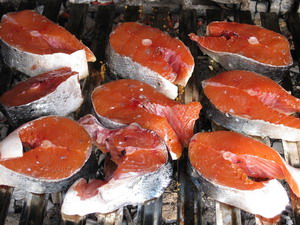 This balancing of nutritional factors is common in our biology. A good example is the much better-researched effects of the polyunsaturated omega 6 fats compared to the omega 3 fats. We now know that omega 6 fats inflame the body while omega 3 fats calm it down. These two fats should be in balance in our diet, 1:1, but in reality, we consume 10 to 30 times more omega-6 fats than omega-3 fats. This is because of our huge dependence on grains in our diet and in the diets we feed our livestock and aquaculture stock (fish). Grains have no omega 3, but lots of omega 6 fat. (Some folks want to believe that there is useful omega 3 oil in flax seed, but in truth, our bodies can not convert the plant form into the forms human bodies need – EPA and DHA.)
This balancing of nutritional factors is common in our biology. A good example is the much better-researched effects of the polyunsaturated omega 6 fats compared to the omega 3 fats. We now know that omega 6 fats inflame the body while omega 3 fats calm it down. These two fats should be in balance in our diet, 1:1, but in reality, we consume 10 to 30 times more omega-6 fats than omega-3 fats. This is because of our huge dependence on grains in our diet and in the diets we feed our livestock and aquaculture stock (fish). Grains have no omega 3, but lots of omega 6 fat. (Some folks want to believe that there is useful omega 3 oil in flax seed, but in truth, our bodies can not convert the plant form into the forms human bodies need – EPA and DHA.)
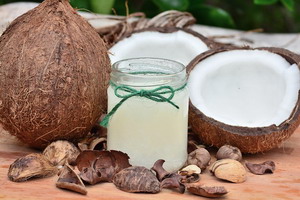 So what other saturated fats do we have? There is one more long-chain saturated fat – myristic acid (C14:0) and our first medium-chain saturated fat – lauric acid (C12:0) to look at. Both of these will raise cholesterol levels (myristic more than lauric), but they appear to raise both the LDL and the HDL cholesterol at the same time. The “good” HDL balances out the impact of the LDL. Myristic appears more in butter fat while lauric acid is high in coconut oil. Lauric acid also is known for fighting off certain bad bacteria, reducing blood pressure, reducing oxidative stress, and fighting viruses like flu, herpes, HPV, and even AIDS.
So what other saturated fats do we have? There is one more long-chain saturated fat – myristic acid (C14:0) and our first medium-chain saturated fat – lauric acid (C12:0) to look at. Both of these will raise cholesterol levels (myristic more than lauric), but they appear to raise both the LDL and the HDL cholesterol at the same time. The “good” HDL balances out the impact of the LDL. Myristic appears more in butter fat while lauric acid is high in coconut oil. Lauric acid also is known for fighting off certain bad bacteria, reducing blood pressure, reducing oxidative stress, and fighting viruses like flu, herpes, HPV, and even AIDS.
 Now we can look at three more medium-chain saturated fats – Capric acid (C10:0), Caprylic acid (C8:0), and Caproic acid (C6:0). Even though these are saturated fatty acids, they do not affect our cholesterol levels at all. They are used as energy sources for the body. They seem to reduce body fat, so they are widely used in weight loss protocols. Additionally, they help improve insulin sensitivity and reduce metabolic syndrome. And strangely they have a historical use in reducing epileptic seizures, particularly when used with a ketogenic diet.
Now we can look at three more medium-chain saturated fats – Capric acid (C10:0), Caprylic acid (C8:0), and Caproic acid (C6:0). Even though these are saturated fatty acids, they do not affect our cholesterol levels at all. They are used as energy sources for the body. They seem to reduce body fat, so they are widely used in weight loss protocols. Additionally, they help improve insulin sensitivity and reduce metabolic syndrome. And strangely they have a historical use in reducing epileptic seizures, particularly when used with a ketogenic diet.
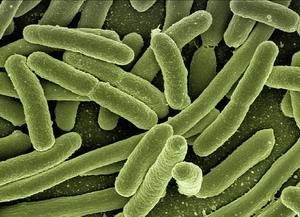 The last category of saturated fatty acids are the short-chain fatty acids – butyric acid (C4:0), propionic acid (C3:0), and acetic acid (C2:0). Unless you are using these in a supplement form, you probably don’t eat these directly. Instead, these guys are formed by friendly bacteria in your gut when the bacteria eat soluble fiber. These short-chain fatty acids are primary energy sources for the cells that form the lining of our small intestine and colon. That is why eating fiber is so important for us. My favorite fibers are inulin from jicama, glucomannan from konjac root (made into zero-carb noodles), green banana-resistant starch, and psyllium seed. Insoluble fibers like wheat bran do not get eaten by bacteria and serve as simple bulk for the intestine.
The last category of saturated fatty acids are the short-chain fatty acids – butyric acid (C4:0), propionic acid (C3:0), and acetic acid (C2:0). Unless you are using these in a supplement form, you probably don’t eat these directly. Instead, these guys are formed by friendly bacteria in your gut when the bacteria eat soluble fiber. These short-chain fatty acids are primary energy sources for the cells that form the lining of our small intestine and colon. That is why eating fiber is so important for us. My favorite fibers are inulin from jicama, glucomannan from konjac root (made into zero-carb noodles), green banana-resistant starch, and psyllium seed. Insoluble fibers like wheat bran do not get eaten by bacteria and serve as simple bulk for the intestine.
 So as you can see, the story of saturated fat is much more detailed and complex than simply the cry that “saturated fat is bad!” Nothing could be further from the truth. The little truth is that too much palmitic acid is a bad idea. So we might want to reduce our consumption of so much palmitic acid. That means avoiding too much palm oil and soft animal fats. One subject that comes up when referring to animal fats is the question of bacon. This one has an interesting story. Beef fat and sheep fat are very high in palmitic acid, but pork fat is a different critter. Pork fat looks more like an avocado or olive than an animal. It does have some palmitic acid, but it has twice as much of the monosaturated oleic acid – 41% plus a healthy dose of the good stearic acid. So what does that tell you about bacon? The question yet to be resolved is whether oleic acid is all that good for us. Some evidence says yes while other says no.
So as you can see, the story of saturated fat is much more detailed and complex than simply the cry that “saturated fat is bad!” Nothing could be further from the truth. The little truth is that too much palmitic acid is a bad idea. So we might want to reduce our consumption of so much palmitic acid. That means avoiding too much palm oil and soft animal fats. One subject that comes up when referring to animal fats is the question of bacon. This one has an interesting story. Beef fat and sheep fat are very high in palmitic acid, but pork fat is a different critter. Pork fat looks more like an avocado or olive than an animal. It does have some palmitic acid, but it has twice as much of the monosaturated oleic acid – 41% plus a healthy dose of the good stearic acid. So what does that tell you about bacon? The question yet to be resolved is whether oleic acid is all that good for us. Some evidence says yes while other says no.
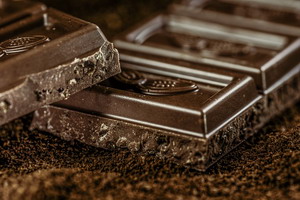 The result is to eat more fish, coconut oil, and dark chocolate and less high-fat red meat. Go ahead and make your bulletproof coffee with the added MCT oil. And be sure to get some dairy fat in your diet to get the C15 fat to lower your all-cause mortality. That sounds doable!Take care,
The result is to eat more fish, coconut oil, and dark chocolate and less high-fat red meat. Go ahead and make your bulletproof coffee with the added MCT oil. And be sure to get some dairy fat in your diet to get the C15 fat to lower your all-cause mortality. That sounds doable!Take care,
David

Now Available: Penetrating Relief DMSO liquid – $6
 Ellen
Ellen
A couple of Ellen’s old friends from her days at the School of Light & Color brought her lunch to celebrate her 79th birthday. They used to all paint together out and about as well as in the studio. One of them brought her a little painting as a gift which she is holding here.
 Finally a new option for osteoporosisFor years there has been nothing new for treating osteoporosis other than drugs and minerals. 20 years ago some new science found that whole body vibration was a good option, but it required investing in a standing vibration plate. Now a company has found that they can get similar results with a vibrating waist pack that you wear. One year studies show impressive results. The product is not on the market yet, but they did just get approved by the FDA.
Finally a new option for osteoporosisFor years there has been nothing new for treating osteoporosis other than drugs and minerals. 20 years ago some new science found that whole body vibration was a good option, but it required investing in a standing vibration plate. Now a company has found that they can get similar results with a vibrating waist pack that you wear. One year studies show impressive results. The product is not on the market yet, but they did just get approved by the FDA.
 Manual prostate exams not necessaryThe typical reason for a prostate exam is to assess the presence of cancer. PSA blood tests are also used for the same purpose. Are both needed? A recent analysis of 8 studies concludes that there is no advantage to manual exams over the routine blood test. Guys in fear of bending over can now breath a sigh of relief.
Manual prostate exams not necessaryThe typical reason for a prostate exam is to assess the presence of cancer. PSA blood tests are also used for the same purpose. Are both needed? A recent analysis of 8 studies concludes that there is no advantage to manual exams over the routine blood test. Guys in fear of bending over can now breath a sigh of relief.
 Financial stress the biggest health riskStress mess with our health on many levels. But the studies are showing that the biggest impact to our immune, nervous and hormonal systems comes from financial stress. Not having enough money to meet your needs really does a number on you.
Financial stress the biggest health riskStress mess with our health on many levels. But the studies are showing that the biggest impact to our immune, nervous and hormonal systems comes from financial stress. Not having enough money to meet your needs really does a number on you.
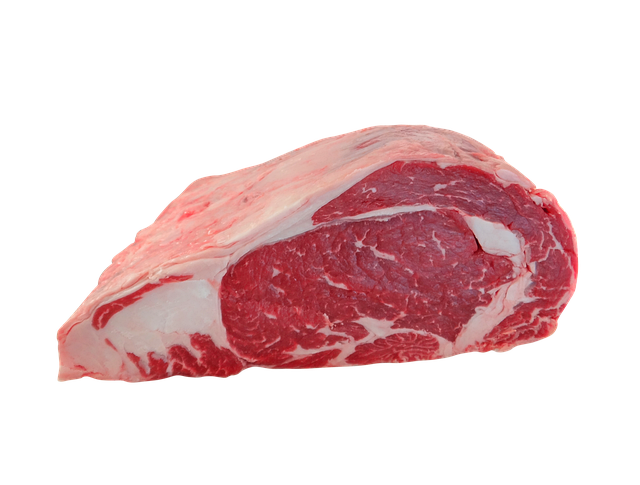
 Saturated fat has been a boogeyman since the late 50s, ever since Ancil Keys decided to blame heart disease and atherosclerosis on saturated fats in his famous 7 countries study. The American medical system and the FDA jumped on his hypothesis and started a massive PR campaign to get people to stop eating saturated fat. The problem was his study was a complete lie. In his original analysis looking at dietary patterns and heart disease, there were 22 countries. He cherry-picked the seven countries that appeared to show him right. But when you look at the total data set of all the countries, there was zero evidence that saturated fat had anything to do with heart disease. It has been 70 years since the big lie and still to this day our government tries to convince us that eating saturated fat is bad for us.
Saturated fat has been a boogeyman since the late 50s, ever since Ancil Keys decided to blame heart disease and atherosclerosis on saturated fats in his famous 7 countries study. The American medical system and the FDA jumped on his hypothesis and started a massive PR campaign to get people to stop eating saturated fat. The problem was his study was a complete lie. In his original analysis looking at dietary patterns and heart disease, there were 22 countries. He cherry-picked the seven countries that appeared to show him right. But when you look at the total data set of all the countries, there was zero evidence that saturated fat had anything to do with heart disease. It has been 70 years since the big lie and still to this day our government tries to convince us that eating saturated fat is bad for us. Let’s get one thing off the table right off the bat. Eating too much of anything is bad for us. Too much sugar, too much fat, too much protein, too much fruit, too much salad, too much bread, too much of anything is a bad choice. We exist on variety. The nutrients we need to be healthy are scattered across all sorts of foods. There is no such thing as the one perfect food. Yes, we can survive on a single food for a while, but not long term. If you are looking for a single complete food source there appear to be a couple of seemingly opposite choices, water lentils or ruminant animal flesh. Insects may also be an option. You could probably survive on these for a year or two without serious nutritional disease.
Let’s get one thing off the table right off the bat. Eating too much of anything is bad for us. Too much sugar, too much fat, too much protein, too much fruit, too much salad, too much bread, too much of anything is a bad choice. We exist on variety. The nutrients we need to be healthy are scattered across all sorts of foods. There is no such thing as the one perfect food. Yes, we can survive on a single food for a while, but not long term. If you are looking for a single complete food source there appear to be a couple of seemingly opposite choices, water lentils or ruminant animal flesh. Insects may also be an option. You could probably survive on these for a year or two without serious nutritional disease. For me, the first obvious clue that the saturated fat fear was out of line was the gross generalizations it was making. It is like the bigotry that claims all people of a particular race are bad. Saturated fats are not one thing. There are over a dozen different types of saturated fat, and each one biologically acts very differently in the body. There have been thousands of studies done on saturated fats over the last 70 years, and the more they research the more they find unique purposes each fat serves in the body. For instance, two rarely mentioned saturated fats are pentadecanoic acid (C15:0) and heptadecanoic acid (C17:0). Both of these fats are directly associated with a decrease in mortality and cardiometabolic diseases. They reduce inflammation, anemia, heart disease, adiposity, lung disease, pancreatic cancer, fibrosis, type 2 diabetes, and fatty liver while regulating and repairing our energy factories; the mitochondria. We can’t make these in our body and they are being considered as essential fatty acids for prevention of chronic disease. Unfortunately, our reduced saturated fat craze has meant that we have reduced these essential saturated fats in our diet. They are found mostly in full-fat dairy foods.
For me, the first obvious clue that the saturated fat fear was out of line was the gross generalizations it was making. It is like the bigotry that claims all people of a particular race are bad. Saturated fats are not one thing. There are over a dozen different types of saturated fat, and each one biologically acts very differently in the body. There have been thousands of studies done on saturated fats over the last 70 years, and the more they research the more they find unique purposes each fat serves in the body. For instance, two rarely mentioned saturated fats are pentadecanoic acid (C15:0) and heptadecanoic acid (C17:0). Both of these fats are directly associated with a decrease in mortality and cardiometabolic diseases. They reduce inflammation, anemia, heart disease, adiposity, lung disease, pancreatic cancer, fibrosis, type 2 diabetes, and fatty liver while regulating and repairing our energy factories; the mitochondria. We can’t make these in our body and they are being considered as essential fatty acids for prevention of chronic disease. Unfortunately, our reduced saturated fat craze has meant that we have reduced these essential saturated fats in our diet. They are found mostly in full-fat dairy foods. So what do we make of the studies that have shown a positive correlation between saturated fat intake and heart disease? Surely they can’t all be funded by pharmaceutical companies trying to sell statin drugs. Well, there are negative outcomes that result from the overuse of one of the saturated fats, palmitic acid (C16:0). Excess palmitic acid increases inflammation and raises LDL cholesterol levels. The big problem is that palmitic acid is our most common saturated fat. Some estimates state that over 56% of all the fats we eat are from palmitic acid. I spent many hours on the government nutrient database looking at the palmitic acid concentrations of various foods and sure enough, the most common fat in a fatty food is palmitic acid. Yet other research tells me that palmitic acid is essential for the development of a growing brain in children. It is also part of every cell membrane in our body. The issue is when we eat too much of this nutrient. Studies show that too much palmitic acid consumption slows us down and decreases our energy production. Its closest relative is the saturated fatty acid stearic acid (C18:0) which has the exact opposite effects on the body. It lowers inflammation and LDL cholesterol levels. It drops ApoB levels – the best measure we have for cardiovascular disease, while palmitic acid raises ApoB. These two fats are supposed to be in a balanced ratio with each other in our diet to generate balance in the body. Unfortunately, I have not been able to find any research that has looked at just what that perfect ratio should be. The best source of stearic acid is cocoa butter, so grab some sugar-free chocolate and enjoy! The second best is suet, the animal fat around the kidneys and loin. Stearic acid actually improves fat burning in our body and reduces hunger!
So what do we make of the studies that have shown a positive correlation between saturated fat intake and heart disease? Surely they can’t all be funded by pharmaceutical companies trying to sell statin drugs. Well, there are negative outcomes that result from the overuse of one of the saturated fats, palmitic acid (C16:0). Excess palmitic acid increases inflammation and raises LDL cholesterol levels. The big problem is that palmitic acid is our most common saturated fat. Some estimates state that over 56% of all the fats we eat are from palmitic acid. I spent many hours on the government nutrient database looking at the palmitic acid concentrations of various foods and sure enough, the most common fat in a fatty food is palmitic acid. Yet other research tells me that palmitic acid is essential for the development of a growing brain in children. It is also part of every cell membrane in our body. The issue is when we eat too much of this nutrient. Studies show that too much palmitic acid consumption slows us down and decreases our energy production. Its closest relative is the saturated fatty acid stearic acid (C18:0) which has the exact opposite effects on the body. It lowers inflammation and LDL cholesterol levels. It drops ApoB levels – the best measure we have for cardiovascular disease, while palmitic acid raises ApoB. These two fats are supposed to be in a balanced ratio with each other in our diet to generate balance in the body. Unfortunately, I have not been able to find any research that has looked at just what that perfect ratio should be. The best source of stearic acid is cocoa butter, so grab some sugar-free chocolate and enjoy! The second best is suet, the animal fat around the kidneys and loin. Stearic acid actually improves fat burning in our body and reduces hunger! This balancing of nutritional factors is common in our biology. A good example is the much better-researched effects of the polyunsaturated omega 6 fats compared to the omega 3 fats. We now know that omega 6 fats inflame the body while omega 3 fats calm it down. These two fats should be in balance in our diet, 1:1, but in reality, we consume 10 to 30 times more omega-6 fats than omega-3 fats. This is because of our huge dependence on grains in our diet and in the diets we feed our livestock and aquaculture stock (fish). Grains have no omega 3, but lots of omega 6 fat. (Some folks want to believe that there is useful omega 3 oil in flax seed, but in truth, our bodies can not convert the plant form into the forms human bodies need – EPA and DHA.)
This balancing of nutritional factors is common in our biology. A good example is the much better-researched effects of the polyunsaturated omega 6 fats compared to the omega 3 fats. We now know that omega 6 fats inflame the body while omega 3 fats calm it down. These two fats should be in balance in our diet, 1:1, but in reality, we consume 10 to 30 times more omega-6 fats than omega-3 fats. This is because of our huge dependence on grains in our diet and in the diets we feed our livestock and aquaculture stock (fish). Grains have no omega 3, but lots of omega 6 fat. (Some folks want to believe that there is useful omega 3 oil in flax seed, but in truth, our bodies can not convert the plant form into the forms human bodies need – EPA and DHA.) So what other saturated fats do we have? There is one more long-chain saturated fat – myristic acid (C14:0) and our first medium-chain saturated fat – lauric acid (C12:0) to look at. Both of these will raise cholesterol levels (myristic more than lauric), but they appear to raise both the LDL and the HDL cholesterol at the same time. The “good” HDL balances out the impact of the LDL. Myristic appears more in butter fat while lauric acid is high in coconut oil. Lauric acid also is known for fighting off certain bad bacteria, reducing blood pressure, reducing oxidative stress, and fighting viruses like flu, herpes, HPV, and even AIDS.
So what other saturated fats do we have? There is one more long-chain saturated fat – myristic acid (C14:0) and our first medium-chain saturated fat – lauric acid (C12:0) to look at. Both of these will raise cholesterol levels (myristic more than lauric), but they appear to raise both the LDL and the HDL cholesterol at the same time. The “good” HDL balances out the impact of the LDL. Myristic appears more in butter fat while lauric acid is high in coconut oil. Lauric acid also is known for fighting off certain bad bacteria, reducing blood pressure, reducing oxidative stress, and fighting viruses like flu, herpes, HPV, and even AIDS. Now we can look at three more medium-chain saturated fats – Capric acid (C10:0), Caprylic acid (C8:0), and Caproic acid (C6:0). Even though these are saturated fatty acids, they do not affect our cholesterol levels at all. They are used as energy sources for the body. They seem to reduce body fat, so they are widely used in weight loss protocols. Additionally, they help improve insulin sensitivity and reduce metabolic syndrome. And strangely they have a historical use in reducing epileptic seizures, particularly when used with a ketogenic diet.
Now we can look at three more medium-chain saturated fats – Capric acid (C10:0), Caprylic acid (C8:0), and Caproic acid (C6:0). Even though these are saturated fatty acids, they do not affect our cholesterol levels at all. They are used as energy sources for the body. They seem to reduce body fat, so they are widely used in weight loss protocols. Additionally, they help improve insulin sensitivity and reduce metabolic syndrome. And strangely they have a historical use in reducing epileptic seizures, particularly when used with a ketogenic diet. The last category of saturated fatty acids are the short-chain fatty acids – butyric acid (C4:0), propionic acid (C3:0), and acetic acid (C2:0). Unless you are using these in a supplement form, you probably don’t eat these directly. Instead, these guys are formed by friendly bacteria in your gut when the bacteria eat soluble fiber. These short-chain fatty acids are primary energy sources for the cells that form the lining of our small intestine and colon. That is why eating fiber is so important for us. My favorite fibers are inulin from jicama, glucomannan from konjac root (made into zero-carb noodles), green banana-resistant starch, and psyllium seed. Insoluble fibers like wheat bran do not get eaten by bacteria and serve as simple bulk for the intestine.
The last category of saturated fatty acids are the short-chain fatty acids – butyric acid (C4:0), propionic acid (C3:0), and acetic acid (C2:0). Unless you are using these in a supplement form, you probably don’t eat these directly. Instead, these guys are formed by friendly bacteria in your gut when the bacteria eat soluble fiber. These short-chain fatty acids are primary energy sources for the cells that form the lining of our small intestine and colon. That is why eating fiber is so important for us. My favorite fibers are inulin from jicama, glucomannan from konjac root (made into zero-carb noodles), green banana-resistant starch, and psyllium seed. Insoluble fibers like wheat bran do not get eaten by bacteria and serve as simple bulk for the intestine. So as you can see, the story of saturated fat is much more detailed and complex than simply the cry that “saturated fat is bad!” Nothing could be further from the truth. The little truth is that too much palmitic acid is a bad idea. So we might want to reduce our consumption of so much palmitic acid. That means avoiding too much palm oil and soft animal fats. One subject that comes up when referring to animal fats is the question of bacon. This one has an interesting story. Beef fat and sheep fat are very high in palmitic acid, but pork fat is a different critter. Pork fat looks more like an avocado or olive than an animal. It does have some palmitic acid, but it has twice as much of the monosaturated oleic acid – 41% plus a healthy dose of the good stearic acid. So what does that tell you about bacon? The question yet to be resolved is whether oleic acid is all that good for us. Some evidence says yes while other says no.
So as you can see, the story of saturated fat is much more detailed and complex than simply the cry that “saturated fat is bad!” Nothing could be further from the truth. The little truth is that too much palmitic acid is a bad idea. So we might want to reduce our consumption of so much palmitic acid. That means avoiding too much palm oil and soft animal fats. One subject that comes up when referring to animal fats is the question of bacon. This one has an interesting story. Beef fat and sheep fat are very high in palmitic acid, but pork fat is a different critter. Pork fat looks more like an avocado or olive than an animal. It does have some palmitic acid, but it has twice as much of the monosaturated oleic acid – 41% plus a healthy dose of the good stearic acid. So what does that tell you about bacon? The question yet to be resolved is whether oleic acid is all that good for us. Some evidence says yes while other says no. The result is to eat more fish, coconut oil, and dark chocolate and less high-fat red meat. Go ahead and make your bulletproof coffee with the added MCT oil. And be sure to get some dairy fat in your diet to get the C15 fat to lower your all-cause mortality. That sounds doable!Take care,
The result is to eat more fish, coconut oil, and dark chocolate and less high-fat red meat. Go ahead and make your bulletproof coffee with the added MCT oil. And be sure to get some dairy fat in your diet to get the C15 fat to lower your all-cause mortality. That sounds doable!Take care,
 Ellen
Ellen